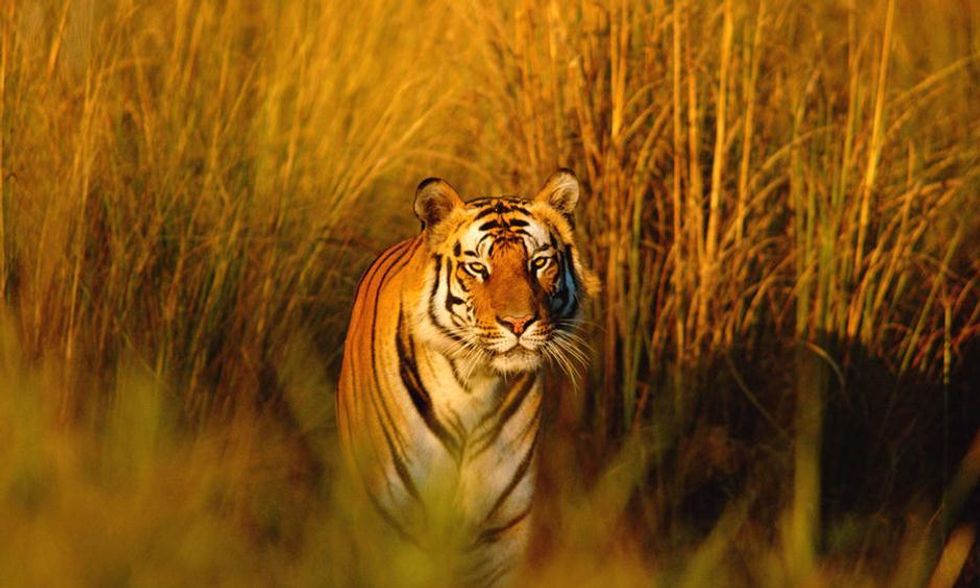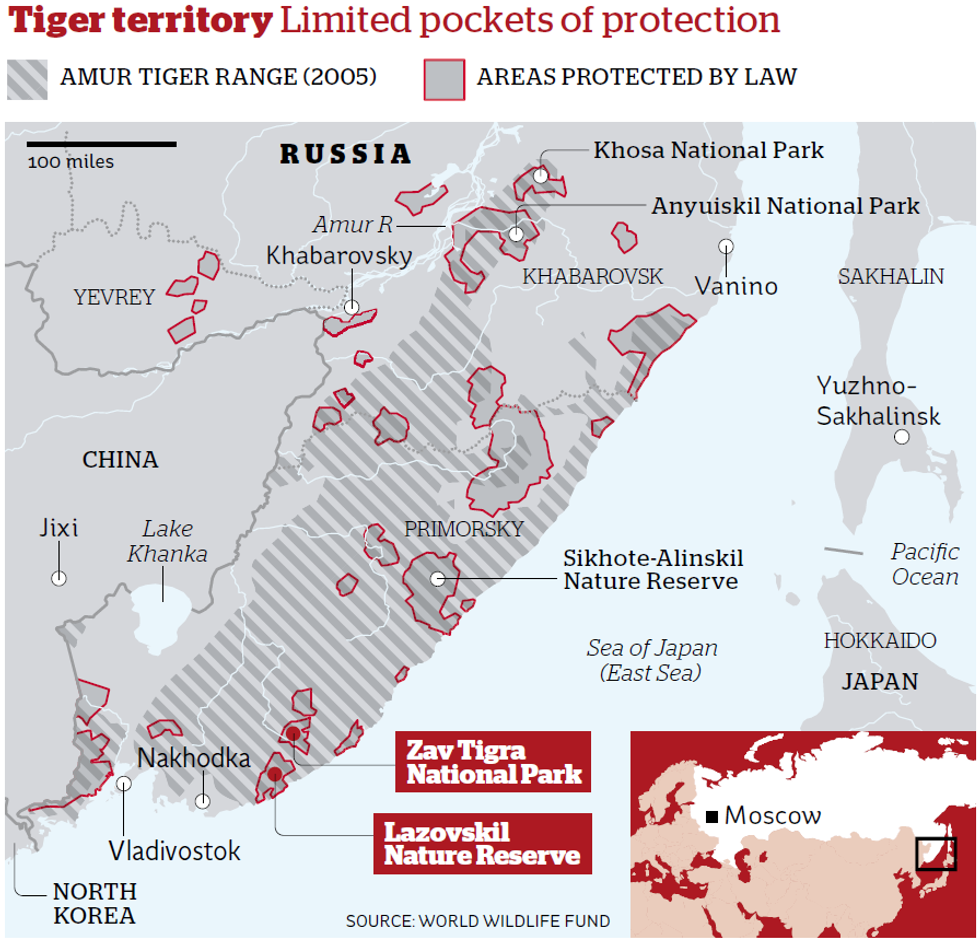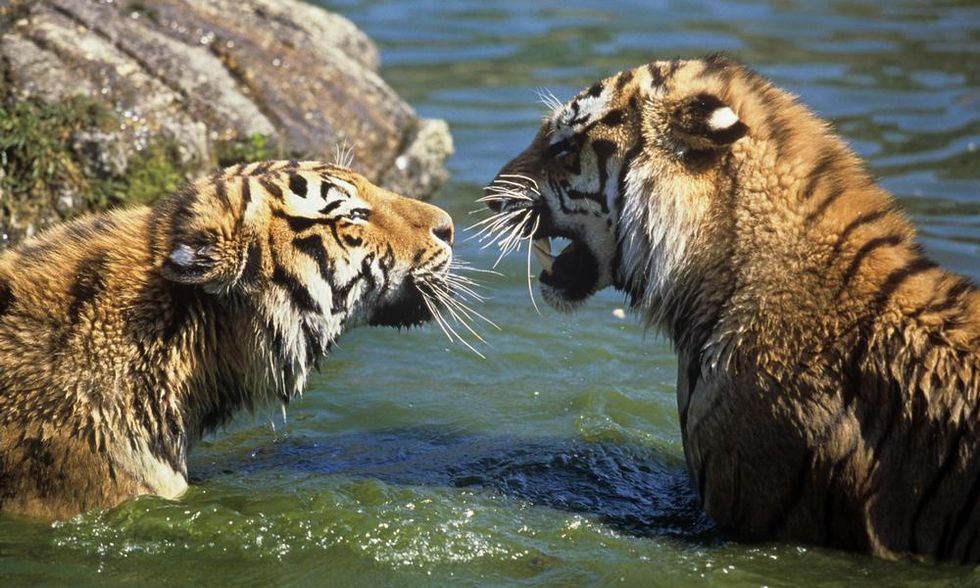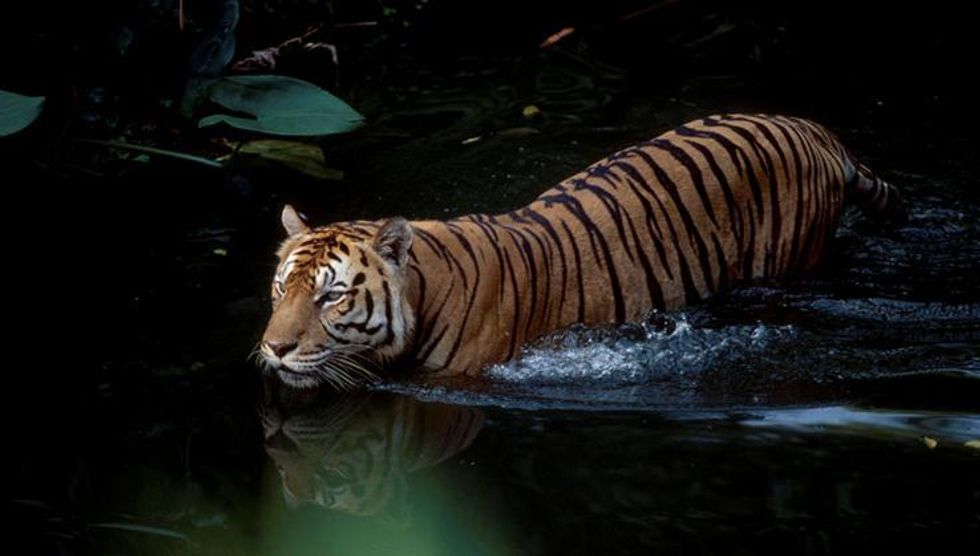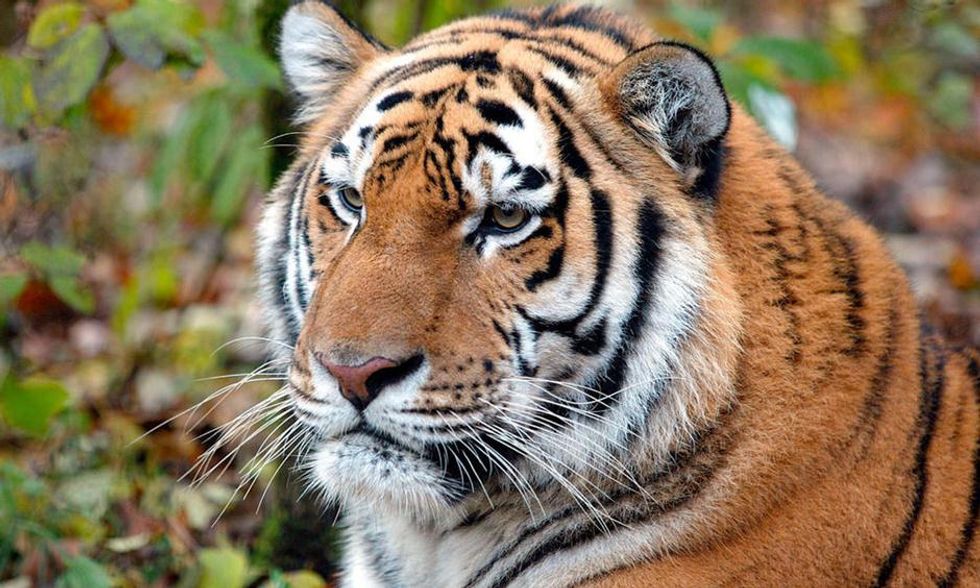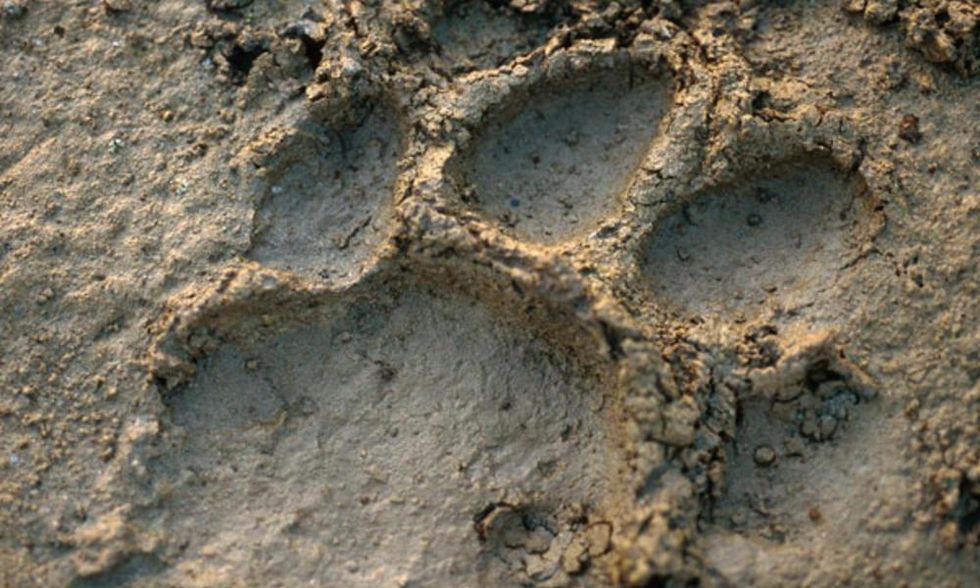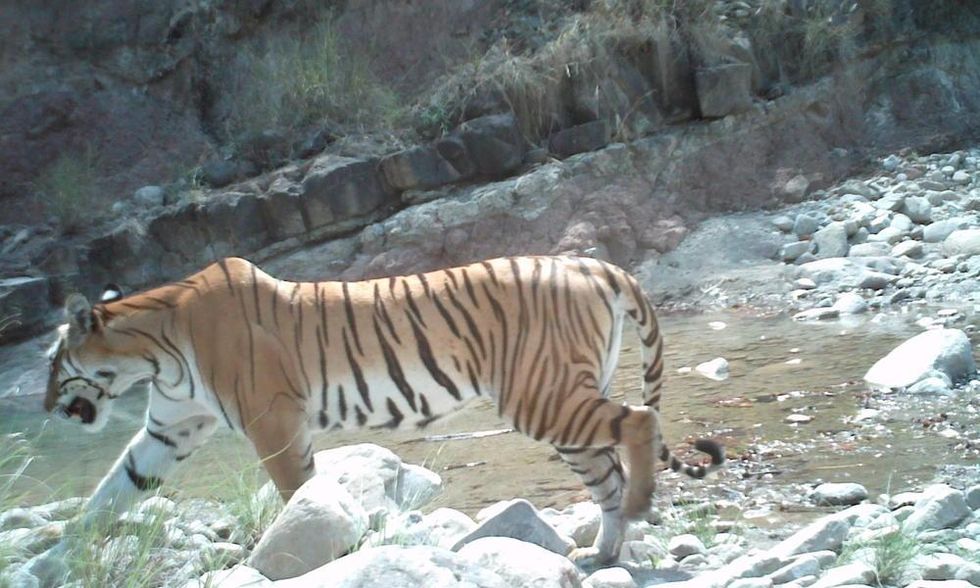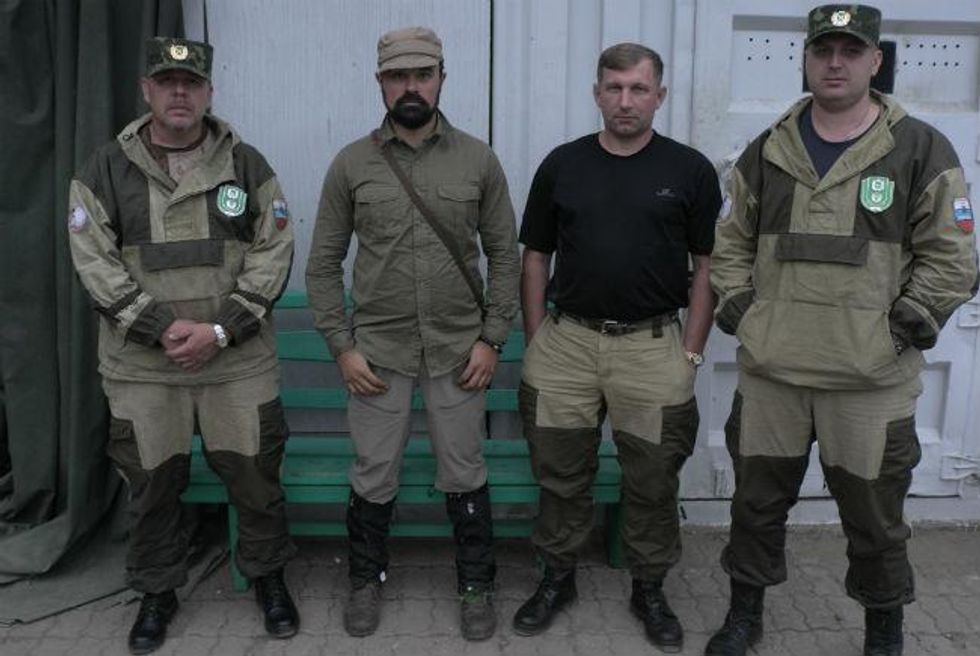News
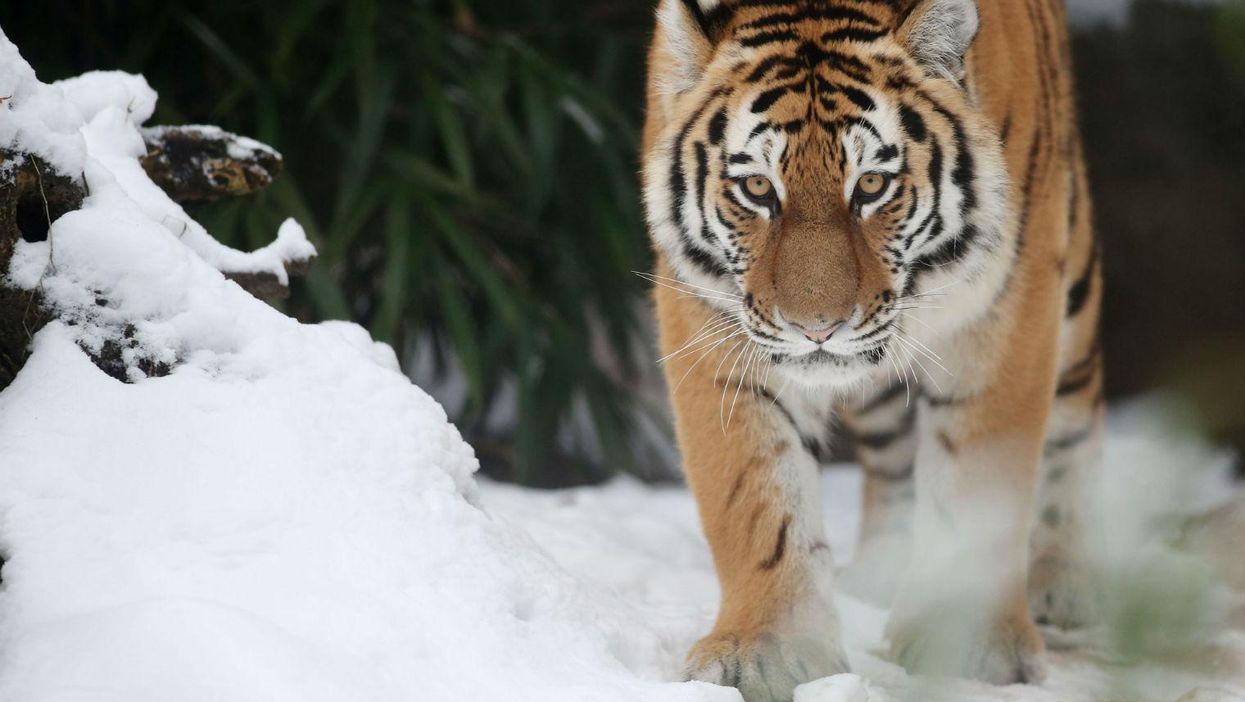
(Picture: AFP/Getty
As the world marks International Tiger Day (Tuesday), the Independent (and its sister titles) has come together with the World Wildlife Fund to highlight the mortal danger these iconic animals find themselves in.
This isn't just the Independent sticking a headline like "Cruelty" and then a picture of a whale or something underneath it.
A hundred years ago 100,000 tigers roamed in Asia, but now only 3,000 survive in the wild.
Here's what we know
It is feared only 3,200 tigers remain in the wild, including 500 Siberian tigers, with 95 per cent of the total population disappearing in the last 100 years.
Three subspecies have already gone extinct, Bali (1940s), Caspian and Javan (both 1970s), while no critically endangered South China tiger has been seen for a number of years, and it is feared it might too be extinct.
They are officially classified as "endangered by the IUCN Red List of threatened species.
Amid rampant deforestation tigers have been reduced to hunting domestic livestock, which leads to local communities retaliating by hunting tigers.
Climate change is also wreaking havoc with tigers' habitats, such as coastal erosion in India's Sundarban islands.
Poaching is playing a massive part
The illegal trade in tigers - it was banned in 1987 - is thought to be worth £11billion a year, amid a boom in demand from wealthy businessmen who see tiger skins and bones as a status symbol.
Their claws, teeth and whiskers are also used extensively in traditional Chinese medicine. A tiger's parts can sell for £30,000.
Increasingly sophisticated and well-armed criminal gangs lay steel traps to snare the tigers before beating them over the head with a stick after they have exhausted themselves from trying to escape.
Shallow pools fill with poisoned water and baited with dead animals are also employed.
Remember Java
The Javan tiger is now officially classified as extinct, having died off in the mid-1970s.
They were similar in appearance to their Sumatran cousins, but smaller, with darker and closer-set stripes and longer whiskers.
On the eve of World War II natural forest covered around a quarter of the island, but by 1975 it had been reduced to just ten per cent, while the human population had increased to 85million.
But here's why we do it: Nepal
By 2009 there were an estimated six tigers in the Sukla Phanta Wildlife Reserve in Nepal, due to extensive deforestation and illegal poaching.
However, after a concerted effort by the Nepalese government and the WWF, there are now thought to be more than 200 in the country.
If you’d like to donate, visit this link.
For more information, follow the WWF on Facebook or Twitter.
Evgeny Lebedev, owner of The Independent, visited Russia to meet the conservationists on the frontline in the battle to save the tiger.
You can read about his experiences here.
Top 100
The Conversation (0)
x
